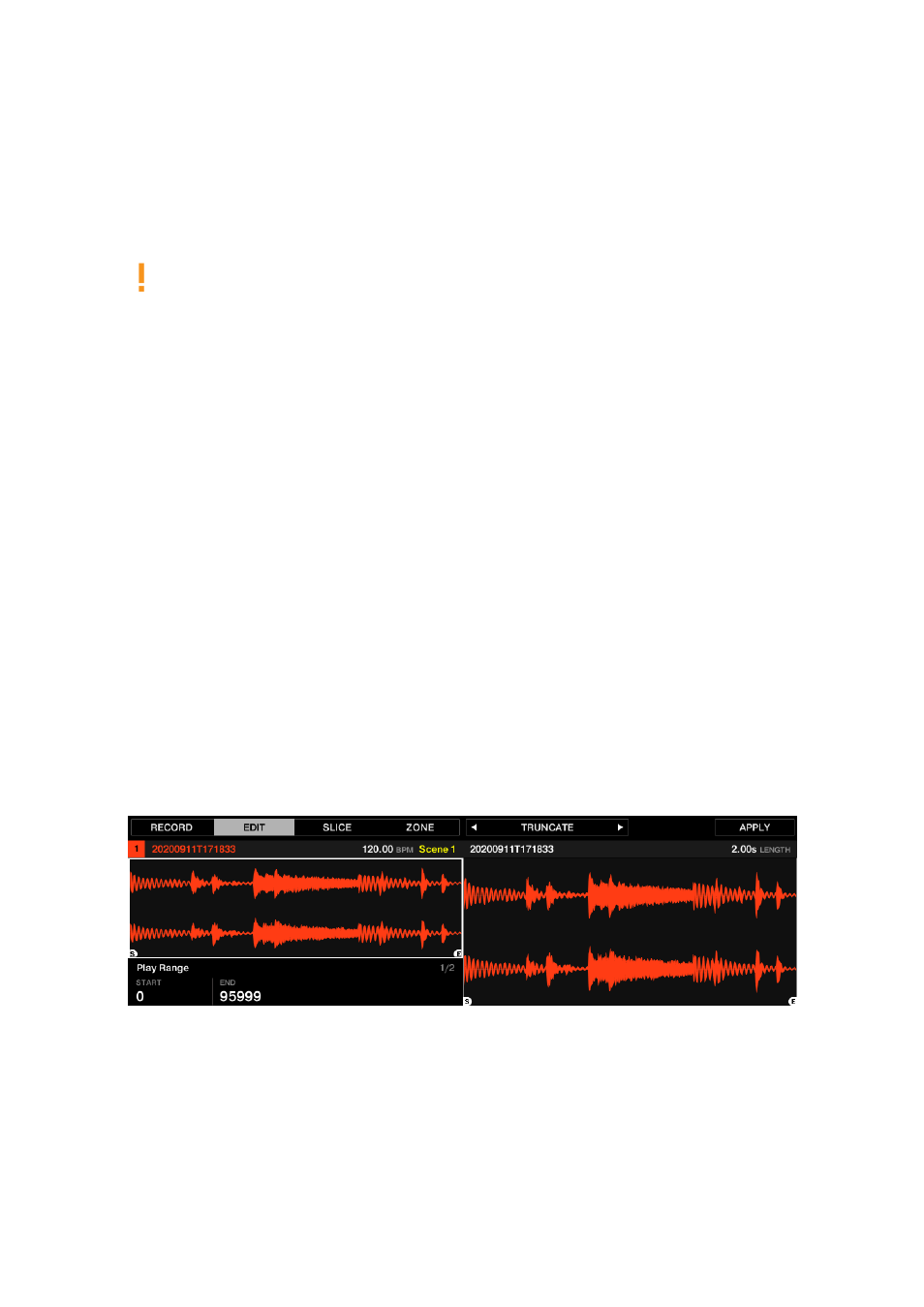Editing a sample, Using the edit page, Which sample is shown in the edit page – Native Instruments MASCHINE+ Standalone Production and Performance Instrument User Manual
Page 194

18.3. Editing a Sample
The Edit page of the Sampling mode enables you to adjust the start and end points of a sample or
Slice and to apply various destructive audio processing functions.
Sample Editing can only be done in the Sampler plug-in, not using the Audio plug-in. If you
want to edit a Sample in the Audio plug-in, you must first switch it to a Sampler Plug-in,
make the edit, and then switch back to the Audio Plug-in again.
Which Sample Is Shown in the Edit Page?
The Edit page always displays the Sample of the Zone currently selected (see
Selecting and
Managing Zones
), and all your actions on that page will affect this particular Sample. For example:
• If you have just recorded a Sample, it will directly appear here. If you have recorded more than
one Sample, the Sampled selected in the Recording History (by default the last recorded
Sample) will appear here, see section
for more information on the
Recording History.
• If the Sample in that Sound is already split into Slices, each Slice has its own Zone and the Slice
of the focused Zone will appear here. See section
for more
information on slicing Samples.
18.3.1. Using the Edit Page
The Edit page enables you to adjust the start and endpoints of a Sample or Slice and to apply
various destructive audio processing functions to any part of the Sample.
To edit a sample:
▶
In Sampling mode, press Button 2 to access the
EDIT
page.
→
The Edit page is displayed.
The Edit page
The right display shows the waveform of the selected Sample:
• Turn Knob 5 to zoom in on the waveform of the Sample and Knob 6 to scroll through it.
• Above the waveform, the information bar indicates the name and length of the Sample.
• The Sample can be played back at any time by pressing the corresponding pad. When the
sample is played back, the playhead indicator (vertical line) shows you the current play position
within the waveform on the right display.
SAMPLING AND SAMPLE MAPPING
187
